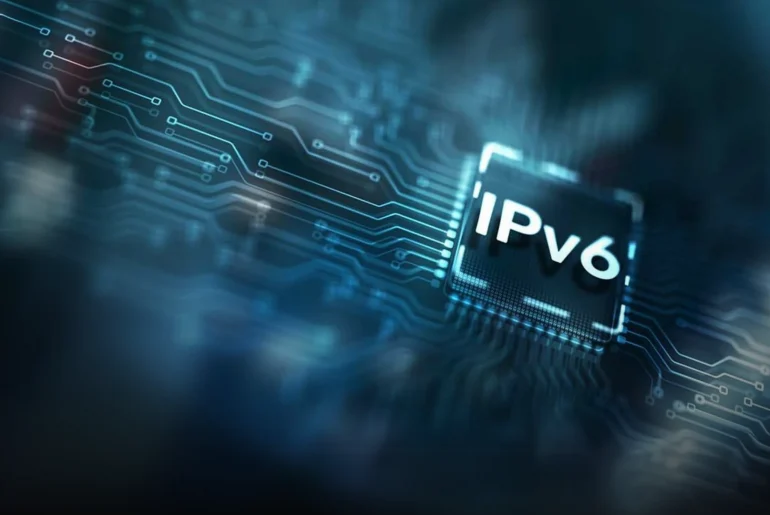En el cambiante mundo de las telecomunicaciones, mantenerse a la vanguardia de los avances tecnológicos es crucial para el éxito. Un área clave de enfoque hoy en día es la adopción global de IPv6, un tema con importantes implicaciones para las empresas de telecomunicaciones de todo el mundo. En este artículo, profundizamos en la importancia de IPv4 para la adopción de IPv6, explorando sus beneficios, desafíos y su impacto en el futuro de la industria.

Vahan Hovsepyan, Asesor Senior de Políticas Públicas y Comunitarias en NCC maduro, Un experto líder en el campo, nos guiará a través de las complejidades de IPv6 y su implementación global, ofreciendo información valiosa sobre cómo las empresas de telecomunicaciones pueden navegar esta transición.
Con su amplia experiencia y conocimientos, Vahan explicará cómo en Ripe NCC logran que IPv6 impulse la innovación, la escalabilidad y un mejor rendimiento de la red, posicionando a las empresas para el éxito a largo plazo en un mundo cada vez más interconectado.
Adopción de IPv6: importancia global y desafíos
Anastasia: Hoy profundizaremos en una de las tecnologías clave que está dando forma al futuro de internet y del mundo: IPv6. Me acompaña mi copresentador, Lado, Director de Desarrollo de Negocios de Aipix, y nuestro invitado especial es Vahan Hovsepyan, Asesor Sénior de Políticas Públicas y Comunitarias de Ripe NCC. Ripe NCC está a la vanguardia de la adopción de IPv6 y tiene un vasto conocimiento que compartir con nosotros.
Vahan¡Gracias, Anastasia! Es un placer estar aquí y hablar de un tema tan importante.
Anastasia: Empecemos con el panorama general. Analicemos los factores externos que aceleran la adopción de IPv6: ¿qué papel desempeñan las regulaciones gubernamentales, los incentivos económicos y las tendencias tecnológicas?
Vahan: Esa es una pregunta muy relevante. El papel del gobierno y las regulaciones varían según el país. Algunos gobiernos utilizan mecanismos regulatorios para impulsar la adopción de IPv6.. OMientras que otros aprovechan el "poder blando" al exigir a los proveedores que admitan IPv6 a cambio de contratos estatales u otros incentivos. En algunos países, se están desarrollando estrategias nacionales para impulsar la transición. También observamos que tendencias tecnológicas, como el despliegue de 5G, IoT e IA, ciudades inteligentes y VSaaS, están impulsando a la industria a adoptar estándares de internet más nuevos como IPv6. Estas tecnologías exigen más direcciones IP y recursos, que IPvv puede proporcionar. Además, las preocupaciones sobre seguridad impulsan la búsqueda de redes más seguras, e IPv6 desempeña un papel clave en ello.
Anastasia: Eso es fascinante. Entonces, ¿cómo influyen las principales empresas tecnológicas, como los proveedores de la nube y otras compañías tecnológicas, en la adopción de IPv6?
Vahan: A los gigantes tecnológicos les gusta Amazonas, Google, Microsofty otros ya han adoptado IPv6 en sus sistemas, lo que ha supuesto un cambio radical. Su adopción es un catalizador importante para que los operadores locales sigan el ejemplo. Una de las barreras anteriores era que los operadores cuestionaban la necesidad de habilitar IPv6 cuando había pocos servicios compatibles. Ahora, con el apoyo de estos importantes actores, es evidente que la adopción de IPv6 no es solo un lujo, sino una necesidad para mantenerse competitivos. Sin embargo, en regiones como Asia Central y Asia Central, aún existen problemas con los sistemas de seguridad heredados y otras tecnologías obsoletas que deben actualizarse para ser compatibles con IPv6. Los proveedores están empezando a comprender que estos sistemas obsoletos están frenando la transición y deben ser reemplazados.
Pronóstico de adopción de IPv4 a IPv6
Anastasia: ¿Cuál es su pronóstico para la transición completa de IPv4 a IPv6?
Vahan: Bueno, algunas personas esperan una transición a 100%, pero siendo realistas, eso no sucederá pronto. No anticipamos una transición completa de IPv4 a IPv6 en el futuro cercano. Mientras las redes y los países adopten IPv6, IPv4 seguirá utilizándose para garantizar la disponibilidad de recursos. Sin embargo, la implementación de IPv6 es crucial para el desarrollo futuro y el crecimiento de servicios y redes. En regiones como Oriente Medio, Asia Central y Europa del Este, el ritmo de adopción varía, pero estamos observando un crecimiento positivo, especialmente en lugares como Kazajistán y Uzbekistán. No obstante, persisten desafíos, en particular con infraestructura y equipos obsoletos que no son compatibles con IPv6.
IPv4 a IPv6. La región observa la adopción
Anastasia: ¿Cómo cambian estos pronósticos en regiones como Medio Oriente, Asia Central y Europa del Este, donde la infraestructura y los presupuestos son tan diferentes?
Vahan: En regiones como Asia Central y Oriente Medio, uno de los principales desafíos es la infraestructura existente, especialmente los equipos antiguos que no son compatibles con IPv6. Esto es especialmente cierto para los operadores más grandes, a menudo monopolistas, que ya han invertido considerablemente en equipos basados en IPv4. Actualizar esta infraestructura requiere recursos considerables. Otro desafío clave es garantizar que los sistemas de seguridad y otras infraestructuras críticas cumplan con los estándares IPv6. Si bien existen obstáculos, estamos observando un progreso gradual, especialmente en países como Uzbekistán y Kazajistán.. Los proveedores aquí están haciendo de IPv6 una prioridad en sus estrategias de desarrollo digital.
Anastasia: Eso es fascinante. Entonces, ¿cómo influyen las principales empresas tecnológicas, como los proveedores de la nube y otras compañías tecnológicas, en la adopción de IPv6?
Vahan: A los gigantes tecnológicos les gusta Amazonas, Google, Microsofty otros ya han adoptado IPv6 en sus sistemas, lo que ha supuesto un cambio radical. Su adopción es un catalizador importante para que los operadores locales sigan el ejemplo. Una de las barreras anteriores era que los operadores cuestionaban la necesidad de habilitar IPv6 cuando había pocos servicios compatibles. Ahora, con el apoyo de estos importantes actores, es evidente que la adopción de IPv6 no es solo un lujo, sino una necesidad para mantenerse competitivos. Sin embargo, en regiones como Asia Central y Asia Central, aún existen problemas con los sistemas de seguridad heredados y otras tecnologías obsoletas que deben actualizarse para ser compatibles con IPv6. Los proveedores están empezando a comprender que estos sistemas obsoletos están frenando la transición y deben ser reemplazados.
Iniciativas RIPE NCC de IPv4 a IPv6
Anastasia: Sin duda, los líderes de la industria desempeñan un papel fundamental en la transición. Ahora, Vahan, hablemos del papel de su organización, RIPE NCC. ¿Qué iniciativas tienen en marcha para ayudar a los operadores a acelerar su transición a IPv6?
Vahan: Ripe NCC desempeña un papel fundamental en el apoyo a la adopción de IPv6, trabajando directamente con operadores de red, gobiernos y organismos reguladores. Proporcionamos recursos esenciales e información sobre los desafíos y las oportunidades de implementar IPv6. Nuestra organización ofrece diversas iniciativas, como eventos, seminarios web y programas de capacitación. Ofrecemos acceso gratuito a seminarios web y exámenes de certificación para profesionales del sector, lo que contribuye a fortalecer sus conocimientos y perspectivas profesionales. Además, utilizamos herramientas como nuestro Atlas de IPv6 para supervisar la implementación y compartir los resultados con el sector. Nuestro objetivo es garantizar que la adopción de IPv6 sea un proceso fluido y coordinado, especialmente en regiones donde el apoyo gubernamental es crucial.
Lado: ¿Podríamos profundizar un poco en mis regiones favoritas, como Asia Central y MENA? En cuanto a las iniciativas IPv6, ¿tienen alguna iniciativa especial para estas regiones? Mencionaron que es muy importante contar con el apoyo de los gobiernos. ¿Conocen algún caso de éxito sobre cómo los gobiernos de estas regiones apoyan la adopción de IPv6?
Vahan: Sí, ya he mencionado la creación de consejos IPv6, donde los gobiernos desempeñan un papel fundamental. En Uzbekistán y Kazajistán ya existen consejos IPv6, cuyo presidente, creo, es un viceministro, y otras organizaciones industriales también apoyan estas actividades. En Uzbekistán, también hemos creado un Memorando de Entendimiento (MOU) en el que se describen diversas actividades para apoyar el desarrollo tecnológico y de telecomunicaciones, incluyendo la adopción de IPv6. Con base en este MOU, hemos implementado diversas actividades, como la creación de un plan de acción para el desarrollo de IPv6 y la colaboración con uno de los operadores monopolistas, UzbekTelecom.
Hemos brindado capacitación personalizada para ellos y los principales operadores móviles, ayudándolos a comprender su infraestructura actual y asesorándolos sobre mejoras. En Uzbekistán, se hizo especial hincapié en esto. También estamos en proceso de redactar un memorando de entendimiento con KyrgyzTelecom y el Ministerio de Comunicaciones de Kirguistán, que esperamos se firme pronto. Nos hemos unido al Consejo IPv6 de Kazajistán y estamos preparando otro memorando de entendimiento con ellos para proporcionar recursos específicos. No trabajamos solo en Asia Central o la CEI. Tenemos un memorando de entendimiento con el regulador de Georgia, GNCC, donde hemos apoyado actividades relacionadas con la adopción de IPv6. También estamos activos en Oriente Medio, donde nos hemos unido al Consejo IPv6 y hemos trabajado con la IGU y otros actores del sector, como la UIT, la ISO e ICON.
Recientemente, incluso fuimos a Moldavia y en junio participaremos en RIPE NCC Days, uno de los eventos clave en el que interactuaremos con gobiernos y empresas para discutir la adopción de IPv6.
Adopción de IPv6: Los cambios de los operadores de telecomunicaciones
Anastasia: Qué interesante. Entonces, tras la adopción generalizada de IPv6, ¿cómo ve la evolución de la infraestructura de telecomunicaciones e internet? ¿Qué cambios podemos esperar?
Vahan: Esa es una pregunta bastante interesante. La implementación de IPv6 no se trata solo de migrar de una tecnología antigua a una nueva. Se trata de crear una ventaja competitiva para los países en su desarrollo digital. Tras la implementación de IPv6, veremos la evolución de más servicios, como SRv6, que ofrece beneficios adicionales. Los Estados también podrían crear incentivos económicos para ayudar a financiar la transición. IoT El desarrollo será enorme, ya que IPv6 permitirá una mayor conectividad y oportunidades para que las empresas de software creen productos basados en él. Es la base del futuro del desarrollo de las telecomunicaciones, lo que genera una amplia gama de posibilidades para nuevos servicios. La adopción de IPv6 sin duda impulsará la transformación digital, abriendo las puertas a una infraestructura de telecomunicaciones más eficiente y diversificada.
Lado: ¿Crees que IPv6 puede hacer que Internet sea menos centralizada, especialmente en términos de gestión de tráfico o redes peer to peer?
Vahan: La adopción de IPv6 podría, de hecho, reducir la centralización de internet. Actualmente, los proveedores utilizan equipos que permiten compartir una dirección IPv4 entre varios clientes. Con IPv6, cada cliente, e incluso cada dispositivo, puede tener una dirección IPv6 única. Esto reduce la necesidad de infraestructura compartida y la hace menos centralizada. Sin embargo, como mencioné, internet ya está descentralizado, y la adopción de IPv6 simplemente lo impulsará aún más en esa dirección. Esta tecnología supone un avance técnico que mejora las capacidades de la red sin cambiar necesariamente el panorama político. Hace que las redes sean más eficaces y competitivas, lo que beneficia tanto a los gobiernos como a los proveedores.
Lado: Interesante. Ya mencionaste las ciudades inteligentes. ¿Pueden las ciudades inteligentes ser un catalizador para la adopción de IPv6?
Vahan: Por supuesto. Si un país quiere tener éxito en la era digital, debe priorizar el desarrollo de redes que apoyen los esfuerzos de digitalización, como las ciudades inteligentes, el IoT y la cobertura 5G. Las ciudades inteligentes requieren vastos recursos de internet, y sin IPv6, es casi imposible proporcionar la infraestructura necesaria. Piense en todos los dispositivos y sensores de las ciudades inteligentes: necesitan direcciones IPv6 para funcionar correctamente. Sin IPv6, simplemente no es posible impulsar la transformación digital que requieren las ciudades inteligentes, la telemedicina y las redes del IoT.
Adopción de IPv6: Casos de cooperación entre iniciativas
Anastasia: ¿Puede darnos algunos detalles interesantes o estudios de casos de Asia Central o del Medio Oriente?
Vahan: ¡Claro! Una de nuestras actividades emblemáticas en Asia Central es la creación de Foro de Interconexión y Peering de Asia Central (CAPIF). El registro para CAPIF 4 El año 2025 ya está abiertoEste evento ayuda a los proveedores de Asia Central y países vecinos a mejorar su peering e interconexión, así como la adopción de IPv6. Asia Central no tiene salida al mar y, debido a factores geopolíticos e históricos, les resulta difícil establecer conexiones de internet redundantes con el resto del mundo. Por eso, hemos apoyado sus esfuerzos, ayudándoles a encontrar alternativas para mejorar la conectividad internacional. También hemos apoyado al Grupo de Operadores de Red de Kazajistán, que es muy proactivo y organiza su propia conferencia. Participamos en varios eventos regionales y colaboramos estrechamente con actores clave de Asia Central, el Cáucaso e incluso Irán, país que desempeña un papel fundamental en la mejora de la conectividad regional.
Anastasia: Sin duda, existen obstáculos para la adopción de IPv6. ¿Cuáles considera que son los desafíos más importantes?
Vahan: Los principales desafíos son una combinación de factores, como las limitaciones financieras y la necesidad de invertir en infraestructura de telecomunicaciones. Muchas empresas aún poseen grandes asignaciones de IPv4, lo que genera resistencia a la transición. Además, existe escasez de especialistas y conocimientos en algunas regiones. Pero el obstáculo más importante es la falta de conocimiento y comprensión de la importancia de IPv6. Los gobiernos deben reconocer que, sin la implementación de IPv6, no podrán respaldar plenamente los servicios digitales que desean ofrecer. Esto incluye la telemedicina, las ciudades inteligentes y las redes de IoT. Podemos ayudar brindando capacitación y soporte técnico para superar estos desafíos.
Adopción de IPv6: Actividades de capacitación
Lado: Entonces, ¿qué iniciativas lleva a cabo? MADURO ¿El NCC ofrece ayuda con esta transición, como apoyo financiero o técnico? Además de apoyar a los operadores, ¿...? MADURO ¿NCC proporciona apoyo financiero o técnico, programas de capacitación, laboratorios, entornos de prueba o proyectos conjuntos con los reguladores?
Vahan: MADURO NCC ofrece una amplia gama de apoyo a nuestros miembros y a la comunidad en general. MADUROComunidad. Ayudamos a organizar eventos regionales, como el Foro de Peering de Asia Central y el Grupo de Operadores de Red de Oriente Medio. Nuestra empresa También organiza actividades como el Día de la Medición de Internet, que realizamos en colaboración con ICON y otros actores interesados. NCC maduro RIPE Labs ofrece una plataforma donde se comparten artículos de investigación y temas de desarrollo industrial. Además, planeamos seguir apoyando a los grupos de operadores de red y fortalecer la cooperación con organismos estatales para facilitar su transición a IPv6. Nuestras iniciativas también incluyen investigación local, certificaciones profesionales y la creación de entornos de prueba y laboratorios.
Anastasia: Me alegra saber de todas las iniciativas en las que participa RIPE NCC. Este tipo de apoyo es invaluable para la industria. Vahan, muchas gracias por compartir tus ideas hoy.
Vahan: Fue un placer. ¡Gracias por invitarme!
De IPv4 a IPv6. Conclusión
A medida que el mundo migra a IPv6 y las tecnologías de videovigilancia se convierten en parte integral de la seguridad y la mejora de los servicios, el poder de la colaboración y las alianzas estratégicas nunca ha sido tan evidente. Al unir fuerzas con organismos del sector e iniciativas globales, las empresas tienen la oportunidad única de innovar, mejorar sus ofertas de seguridad y mantenerse a la vanguardia en un mercado en constante evolución.
Aipix Se erige como un socio clave en este camino, ayudando a las empresas a aprovechar el potencial de las tecnologías de última generación. Abracemos el futuro de la cooperación, donde los esfuerzos colectivos impulsan soluciones más inteligentes, seguras y conectadas para todos.
Abracemos juntos el futuro: ¡donde la innovación, la seguridad y la conectividad hacen la vida más segura e inteligente!





